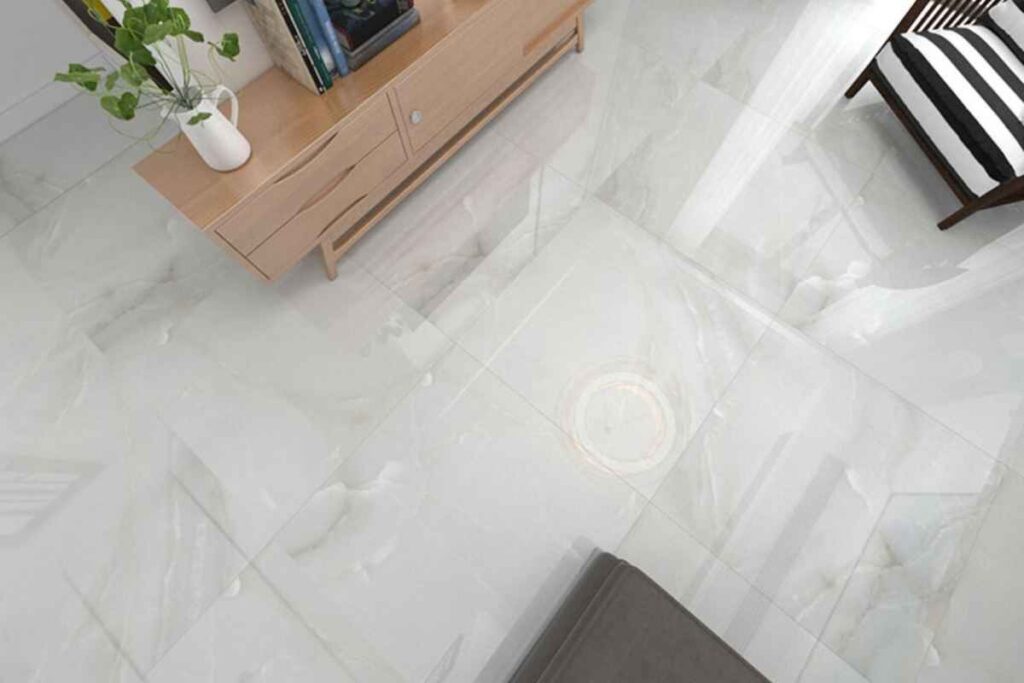Today, ceramics are used in most houses for flooring. But the use of ceramics has disadvantages that sometimes consumers do not understand. Our goal in writing this article is to inform you about the advantages of using stone instead of ceramics. After reading this article, decide to choose stone or ceramic with more knowledge.

We recommend the use of stones. At the end of this article, this article will be fixed to you.
Ceramics are made of special soils such as kaolin and pottery soil and can be used in different places by being cooked and glazed on it.
Ceramics are often used as flooring, but among its disadvantages are the following:
- No impact resistance
- Scarce similar tiles
- No scratch resistance
- Slippery Surface
- Rapid scaling of ceramics
- Asymmetry of the seam between the tiles
- Low ceramic resistance to climate change
- Not insulated
- Excessive reflection of light
Disadvantages of using ceramics
No impact resistance:
Ceramics are not resistant to impact and if a strong object collides with it, it breaks or the lips are filled. And the ceramic soil is marked from under the lip-filled part. So it loses its beauty and façade.

Rare similar tiles:
If one of the ceramics in your home is fractured, it is very difficult to find the same tiles and sometimes you have to replace the entire ceramics.

No scratch resistance:
Due to impact and scratching on the ceramic surface, the soil color appears beneath the glaze surface. However, there is no change in the appearance of the stone due to impact and scratches.

Slippery level:
Ceramics have a very polished and slippery surface. But it is can reduce the slippery intensity of the stone surface by tooling. One of the things that can be done to prevent slipperyness on surfaces such as parking floors or in general commuting places is to groove the stone – fling the stone _ harmful. Grooving, grooving, as the name implies, creates grooves to increase the friction and adhesion of the stone.
Rapid ceramic scaling:
Ceramic cleaning is very difficult because it absorbs mass and it is needed for cleaning using mass and acid detergents such as salt ink.
To clean the stone, just use hot water. Vinegar or detergents with neutral pH can also be used.

Asymmetry of the seam between the tiles:
In order to operate large-scale floor ceramics, it is important to pay great attention because the seam between the ceramics becomes asymmetrical. This is one of the disadvantages of ceramics. So-called say (ceramic swings) . But the stone does not have this problem in any dimension and the seam between the rocks is symmetrical.

Low ceramic resistance to climate change:
One of the biggest advantages of stone is that it has a very high resistance in different climates. But ceramic tiles are not resistant to stone for this reason in northern or southern towns in buildings often stone has been used.
Not being insulated:
Ceramics are not good thermal insulation and attract cold in winter. Therefore, energy consumption is higher in buildings where ceramics are used. But the stone is the opposite of ceramics, it has coolness in summer and absorbs ambient heat in winter.
Reflecting too much light:
Ceramic tiles cause excessive reflection of light due to their high glaze and sometimes the eyes of the person are annoyed by the excessive light. The reflection of light in the stone is such that it transforms low-light and small environments into a bright and open environment.

In the construction industry, in addition to natural stone and ceramic tile, there are other materials that are used for flooring such as Mdf, artificial stone, wood, parquet, etc.
Each has its advantages and disadvantages. In this section, we investigated the comparison of stone and ceramic tile. In the paper comparing stones with MDF, we compare these two materials together. By reading these articles and obtaining information in this field, you can choose the material you want with a more open view.